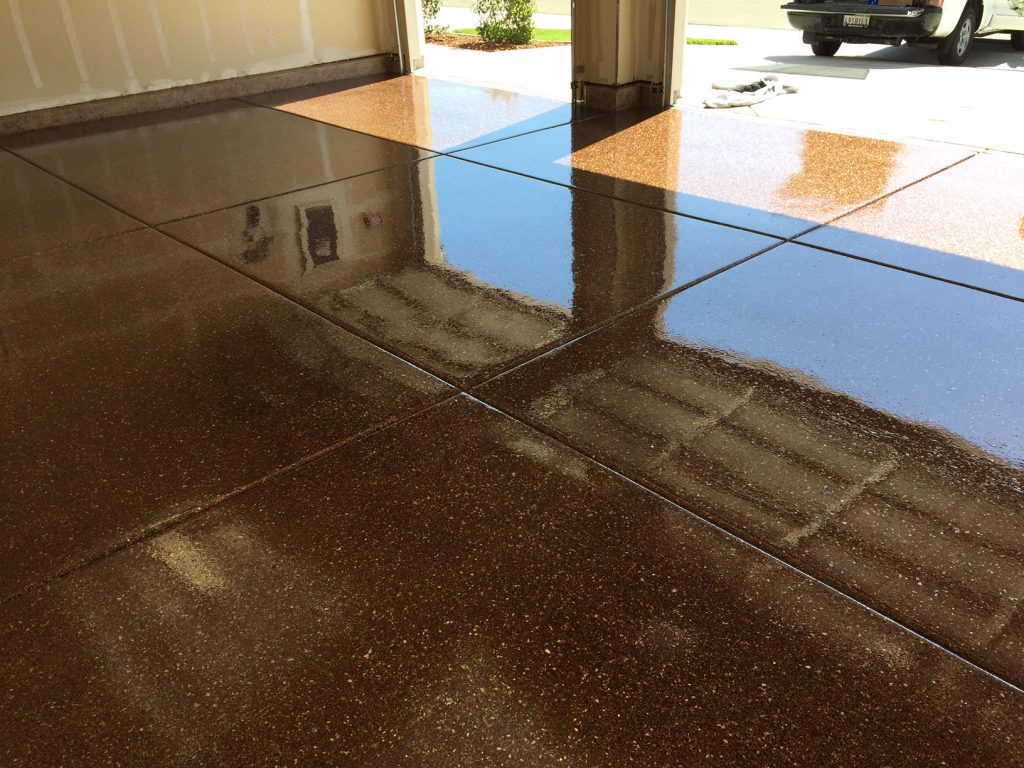Gloss – we know it’s a word that describes smooth and shiny things. With epoxy flooring and concrete polishing, customers often speak about wanting a glossy floor. What is gloss and how does California Custom Coatings give your Sacramento floor a gloss coat, when requested?
What is Gloss?
Gloss describes how shiny or lustrous the human eye perceives a surface. Therefore, reflectivity is especially important for creating a “gloss coat.” It’s more than just reflectance, however, as you’re not likely to look at a mirror and say that it’s glossy, although you would say it’s shiny. This illustrates that glossiness has a psychological component. We expect a mirror to perfectly reflect the world around it. We don’t necessarily expect that of a floor, a piece of furniture, or any other ordinary object. By altering how light reflects from the surface of these things, however, we can make them glossy.
What Creates Gloss
If a surface is rough, light that hits it is scattered back in many different directions. Think of the surface of dirt, or an ordinary rock. Light hits them and goes all sorts of ways. This uniform scattering of light causes the surface to look dull. Therefore, the first step in making a gloss coat is to smooth out a surface so that light shined on it from one direction will reliably bounce off of it predictably.
After a surface is as smooth as possible, the next step for making it glossy is to add a coating that causes it reflect even more light. The polymers used by California Custom Coatings offer varying levels of reflectance, so that you can go from a matte surface (low level reflectance) to an ultra high gloss floor (maximum level of reflectance). We can provide samples to demonstrate just how each product affects the glossiness of your floors.
In another article, California Custom Coatings will focus on just how you measure gloss and why this measurement is useful when comparing flooring options.
